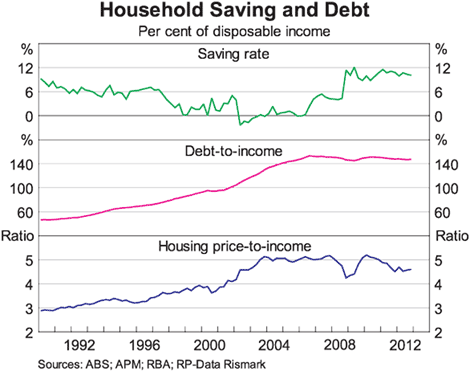Effects of lower interest rates clearly evident in housing market: Christopher Kent
The impact of lower interest rates on the established housing market have been noted by RBA assistant governor Christopher Kent in a speech made at the Bloomberg Australia Economic Summit this week.
Kent also highlighted the RBA’s expectation of a pick-up in non-mining investment, including dwelling investment, with mining investment likely to peak this year, but with a degree of uncertainty about how this recovery would take shape.
“As you all know, there has been a significant easing in monetary policy, starting in late 2011,” said Kent.
“There are signs that the low level of interest rates is having some of the expected effects and these are likely to have further to run.
“The effects are clearly evident in the established housing market and, as I have discussed at some length recently, this should help to underpin further moderate growth in dwelling construction,” he said.
He presented the following chart showing the recent improvement in housing affordability and the deleveraging of households in favour of higher savings since the GFC.
Click to enlargeKent’s speech examined the outlook for business investment in Australia and considered the outlook for mining-related investment and non-mining related investment.
“Non-residential building activity remains relatively subdued, but prospects are that investment in building and structures outside of the resources sector will pick up gradually.
“The current growth of the population – at around 1.7% annually – will provide some support for demand.
“Not only does population growth add to the demand for new goods and services, it also gradually eats into any existing spare capacity that might be hanging over some industries and provides an impetus for investment in new capacity,” Kent said.
Kent warned that the peak in resources investment “is now close” and that once it has passed, the decline in mining investment would weigh on economic growth.
He said non-mining business investment was “currently at relatively low levels as a share of GDP” and “relatively low as a share of nominal GDP” but that it has been growing in real terms over the past two years.
“So far during the current episode, the growth of non-mining business investment has been less than it was during the early 2000s and mid 1990s, but more than it was during the financial crisis and the early 1990s recession.
“Our forecasts in the February statement on monetary policy (SMP) embodied moderate growth in non-mining business investment, which would, if it comes to pass, place the current episode in between these four earlier episodes.
Kent concluded by highlighting the RBA’s expectation of a “gradual recovery in non-mining business investment and further moderate growth of dwelling investment” but warned that the profile for non-mining business investment remains “uncertain, including because of the high level of the exchange rate”.
“The profile for mining investment also remains uncertain, though it appears that the peak in mining investment is likely to occur this year. Pulling all of this together suggests that growth for the economy as a whole will be a little below trend this year and then pick up gradually through next year,” he said.
